February 2020. California.
This weekend while visiting the Mount Shasta area we stayed overnight at a Lodge / RV campground and charged our car on an RV electrical hookup. I plugged in that night and we left the next morning with 281 miles of rated range (and a warm cabin).
Many RV parks have electric hookup posts that have a 240 volt / 50 amp outlet, a 120 volt / 30 amp outlet, and sometimes standard 120 volt outlets. The 50 amp outlet is called the NEMA 14-50, and the 30 amp is the NEMA TT-30. I used our Tesla Gen 2 Mobile Connector with a 14-50 adapter, which added 29 miles of range per hour of charging to the battery pack of our Model 3.
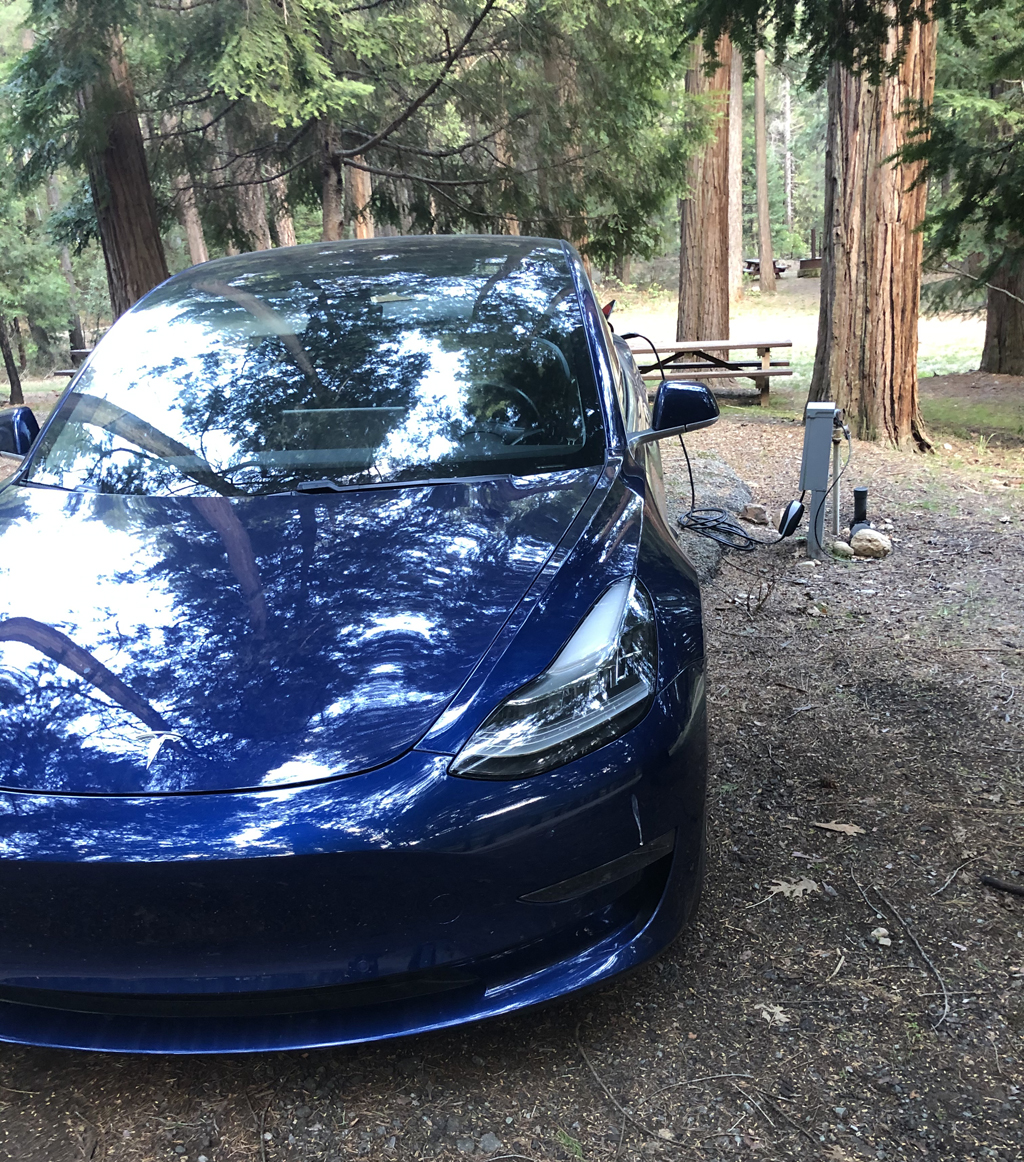
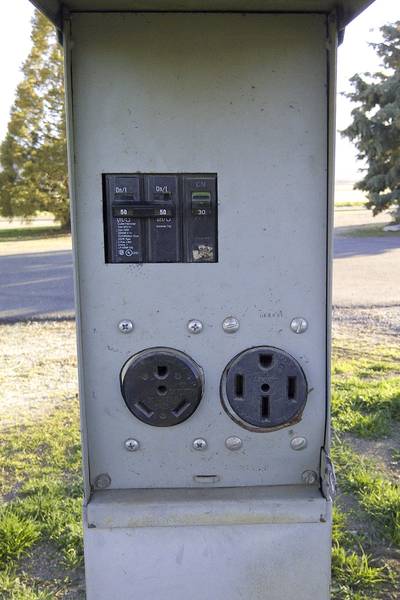
Tesla’s Gen 2 Mobile Connector provides 32 amps to your car, and when plugged into a 240V 14-50 outlet will give a Model 3 up to 30 miles of range per hour. The TT-30 will provide about 10 or 11 miles of range per hour to a Model 3.
This is not a new concept. Electric car owners have long been using RV campgrounds as charging sites. Today there are many portable charging cords on the market, but not that long ago EV owners had to devise their own portable charging solutions. Darell Dickey demonstrated how it all works 15 years ago with his 2003 Toyota Rav4 EV. Check out Darell’s informative website www.evnut.com for more on the original Rav4 EV and other pioneering electric cars like GM’s EV1 that he drove.
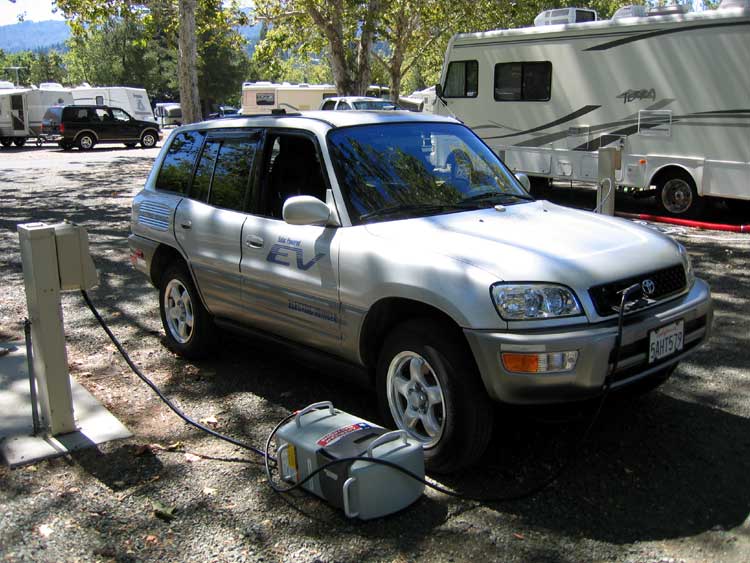
Tesla’s Mobile Connector is small, weighs only 5½ pounds, and can charge your EV at either 120 volts (Level 1 charging) or 240 volts (Level 2 charging). Another nice detail: it stows away in a zippered storage bag measuring 12 x 12 inches, and the bottom of the bag is covered with velcro so it sticks to the carpeted floor of the trunk (or frunk) and doesn’t slide around while driving.

Tesla vehicles are currently delivered with the Gen 2 Mobile Connector and the NEMA 5-15 adapter for plugging in to standard 120 volt outlets (in the US). You can also buy the NEMA 5-20 adapter, and six different 240 volt adapters for Level 2 charging. If your EV didn’t come with a portable Level 2 charging cord you’ll find many options for your car online.
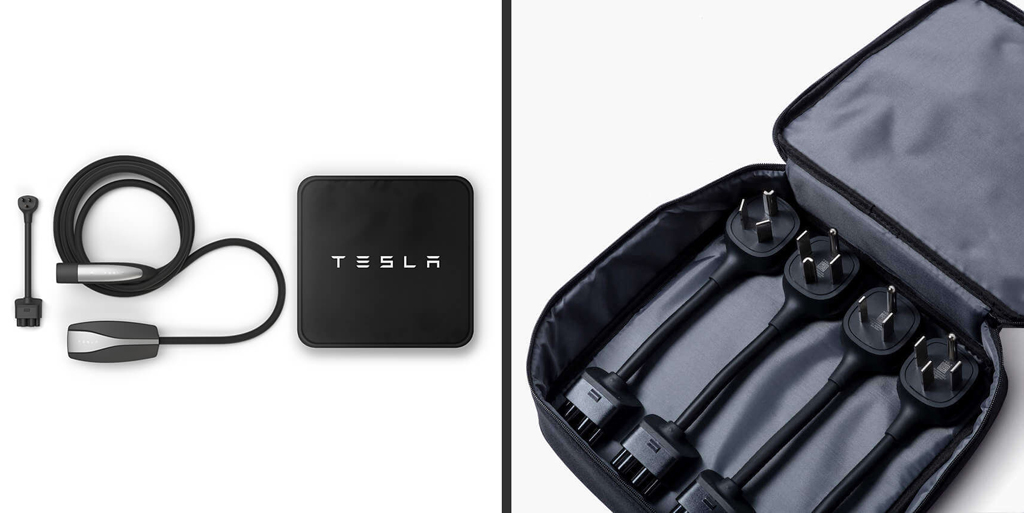
Finding RV parks with electric hookups is easy on Plugshare’s website and phone app – just select for NEMA 14-50 (see below). There are also RV / campground phone apps and websites, such as Allstays, that can help you find RV sites with 30 and 50 amp hookups.
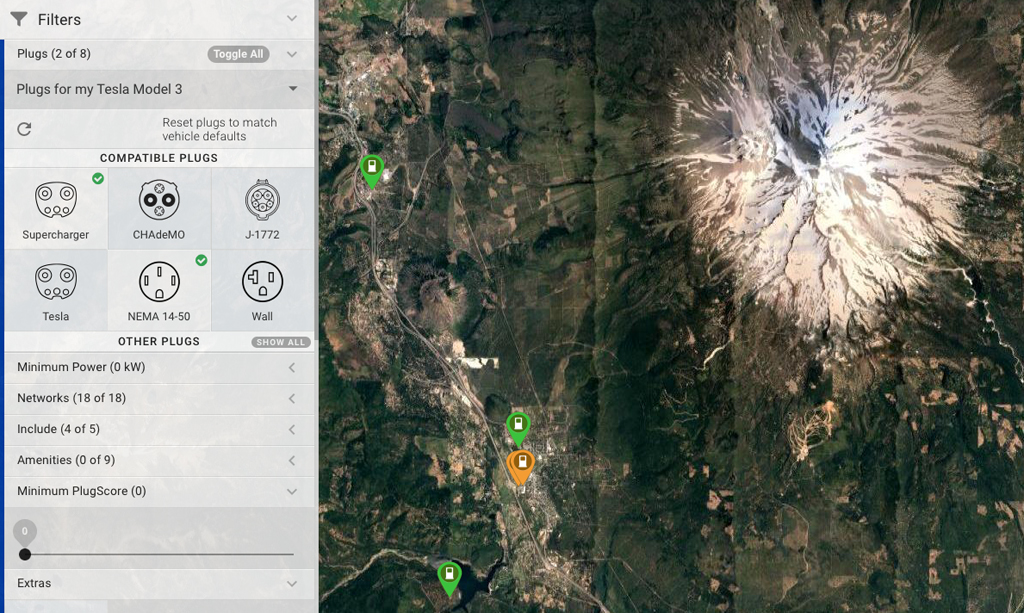
About our trip: The RV park we visited was a little over 200 miles from our town. We left home with 295 miles of rated range, checked in to the RV park, drove around the area a bit, and plugged in that evening with 77 miles remaining in the pack. I didn’t need to charge at the RV park since there were 2 Tesla Supercharger locations in Mount Shasta 10 miles away (and 3 Superchargers along Rt. 5 between my house and Mount Shasta), but it was convenient. If you plan a trip that will rely on charging at an RV park, call ahead to reserve a spot and make sure you have the right adapters. Sites near popular destinations can be busy throughout the year.
BTW: The Railroad Park resort was pretty cool. We stayed in one of the railroad cars that had been converted to a hotel room. It was set up for a family of 5 and included a full bath. The kids loved it.
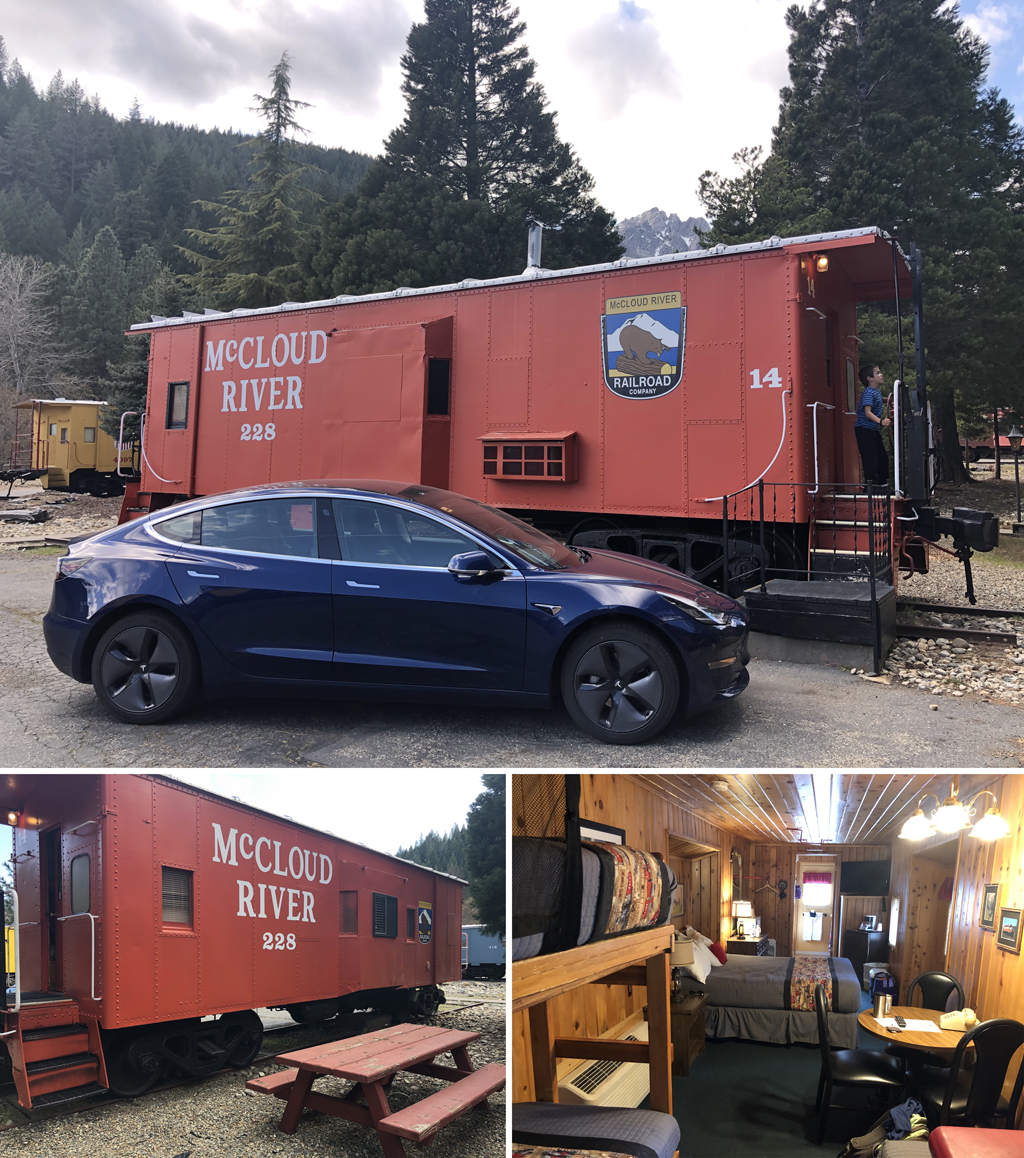
This was a short trip so we took advantage of our time while in the area. We hiked under the Hedge Creek waterfall, found a nice diner for breakfast in Mount Shasta, got in some sledding on Snowman’s Hill, and toured the Lake Shasta Caverns.
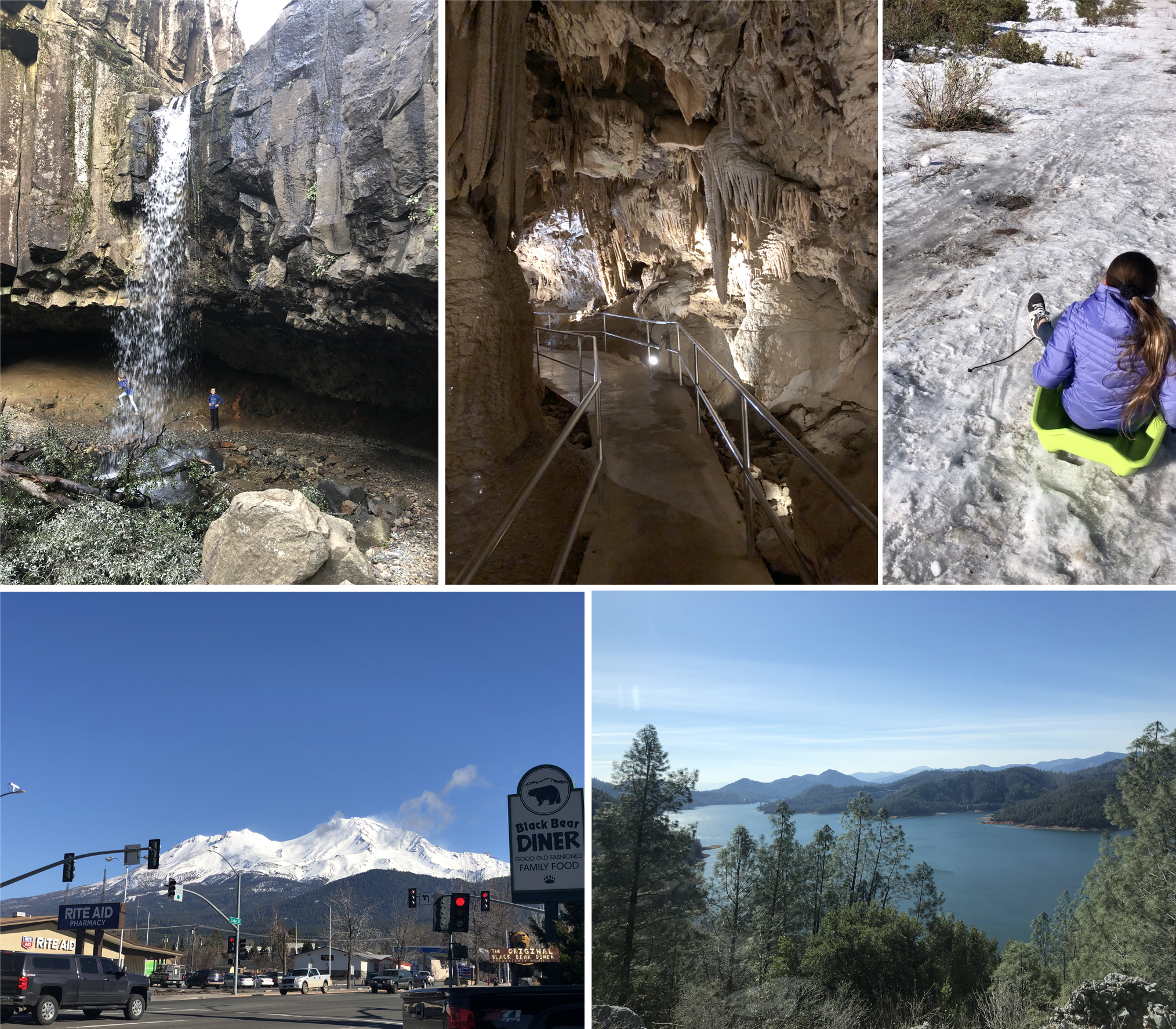
We started the trip home with 281 miles of rated range, drove 238 miles, and pulled into the garage with 95 miles remaining in the pack. The Model 3 is very efficient. Of course it helped that the trip home started at 4300 feet elevation and our town is near sea level.
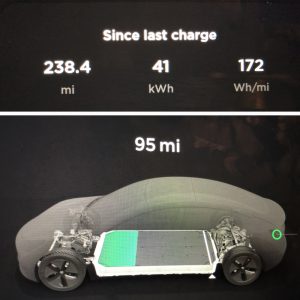
Quick note on range: We’ve had our Model 3 for almost 2 years and that 238 miles is the furthest I’ve driven between charging sessions. So far I haven’t needed the full 300+ miles of range available in our Model 3, but knowing that you can drive over 200 miles, and still have another 50-100 miles in the pack removes the idea of range anxiety and makes the Model 3 a good car for road trips.
Volcanoes and Electricity: At over 14,000 feet, Mount Shasta dominates the region – I could see the snow-covered peak of Shasta in the rear view mirror for over 100 miles as we drove home. We also saw Lassen Peak and the Sutter Buttes off to our left. Mount Shasta and Lassen Peak are the southernmost active volcanoes in the Cascade Range.
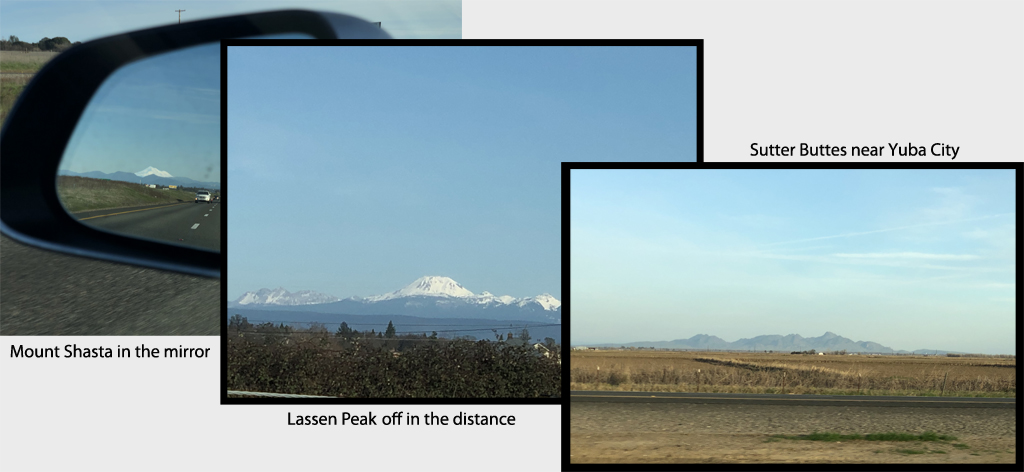
The Sutter Buttes are the remnants of a dormant volcano that was last active over one million years ago, and is associated with volcanic activity in California’s Coastal Mountain range like the Clear Lake Volcanic Field. Clear Lake sits above a magma chamber that generates steam for the world’s largest complex of geothermal power plants – averaging 1000 MW of power day and night. The geothermal power plants together with hydroelectric, wind, and solar power made about 40% of California’s electricity in 2018 – one of the reasons why driving electric in California has a much lower carbon impact than driving a gas-powered car.
Summary: RV parks are found just about everywhere and are a good option to power your EV journeys – especially if you like exploring.

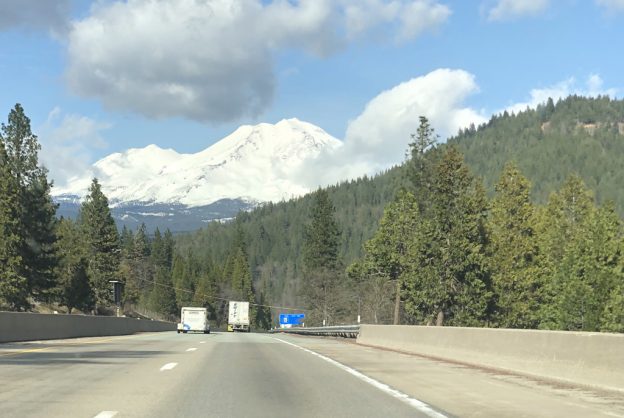
Pingback: This In-Depth Tesla Model Y Road Trip Story Is Fascinating And Informative | Computer Information System
Pingback: This In-Depth Tesla Model Y Road Trip Story Is Fascinating And Informative – Electric Vehicle News Feed